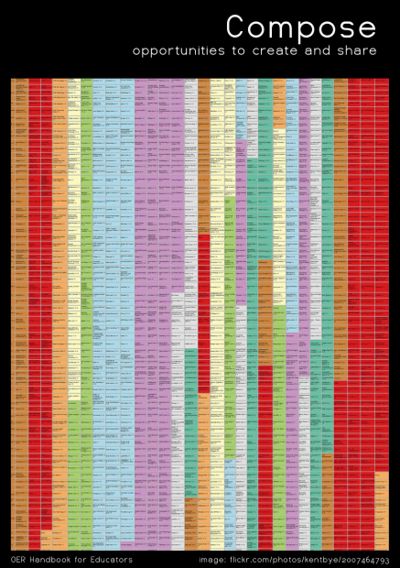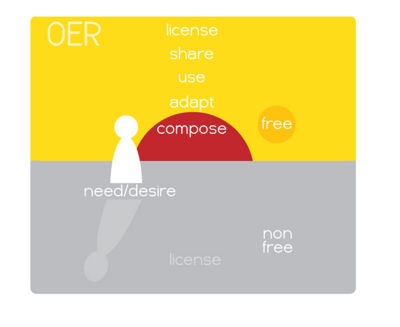Compose
| [▲]OER Handbook for educators | |
|---|---|
| Contents | | Introduction | Find | Compose | Adapt | Use | Share | License | Conclusion | Appendices |
If you don't find ready-made resources that are easily adapted for use in your situation, then you may need to build some from scratch.
The easiest way to get started is to join in on an existing project like Wikipedia or Wikiversity. Even making small edits or corrections adds (cumulative) value.
These projects tend to attract subject experts and some of the resources may lack the pedagogical finesse of educators. Over time, as you gain confidence in your OER development skills, you can move on to contributing larger sections or even starting your own project.
This chapter covers a range of tools commonly used in OER production and includes a section on issues to consider if you intend your OER to be accessible via mobile devices. New tools are constantly being developed, and some suggest others not listed in this handbook (ex: http://ngoinabox.org/).
The software tools recommended in this handbook are open source (see Development Models in the Introduction).
Some are more complex than others and may take time to learn. Others involve complex installation procedures. The quality and availability of help files and documentation vary significantly in the open source world. Those included in this handbook are generally well supported, and you can almost always find a vibrant community of willing users and developers to assist when needed.
During the course of an OER project, you may encounter the need for a feature not supported by the program you are using. In this case, find a program that does, export your work in a suitable data format, and continue.
The important thing is to have a clear idea of what you intend to do, and find the right tools with the right combination of features to help you achieve your objectives.
Share your OER as soon as possible to attract others who might help with your project. See Share OER for more information.

